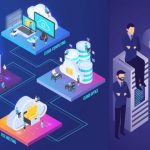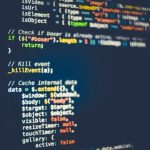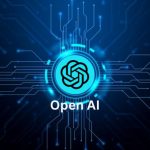What is artificial intelligence?
To begin, I am going to explain the definition to you in the simplest way possible. Artificial intelligence encompasses the capacity of a machine to acquire knowledge and execute activities demanding human-like intelligence, including tasks like reasoning, perception, and decision-making.
It comprises a collection of methods and algorithms enabling a machine to autonomously engage in “thinking” and autonomous decision-making. Such techniques encompass machine learning, natural language processing, neural networks, and various other methodologies.
Artificial intelligence allows us to automate tasks that previously required human intervention and, in some cases, even perform tasks that humans could not perform themselves.
Types of artificial intelligence
There are different types of artificial intelligence that are used depending on the type of task to be executed. The main types of artificial intelligence are the following:
Supervised learning:
This type of artificial intelligence is used when we want the machine to make predictions or classifications on new data. It is supplied with a set of labelled data so that the machine learns to identify patterns and can then apply those patterns to new data.
Unsupervised learning:
In this type of artificial intelligence, the machine is supplied with a set of unlabeled data so that it can identify patterns and structures on its own. It is useful when you do not have labelled data or when you want to discover patterns that have not been previously identified.
Reinforcement learning:
This type of artificial intelligence is based on learning through the feedback that the machine receives from its environment. The machine learns to make decisions based on the rewards and punishments it receives.
Neural networks:
Neural networks represent a category of algorithms inspired by the workings of the human brain. Comprising interconnected nodes, they analyze information and render decisions. These networks find application in tasks such as image recognition and natural language processing.
Natural language processing:
This form of AI is employed to comprehend human language, enabling a machine to interpret and respond suitably. Its applications include chatbots and virtual assistant
Also Read: Gpt66x: Revolutionizing Natural Language Processing
How does artificial intelligence work?
I already told you about the types of artificial intelligence, now we are going to go a little deeper and talk about how this technology works. Pay attention to the following points:
Data processing:
AI relies on data processing to be able to learn and perform tasks. The machine needs to have access to a large amount of data to be able to identify patterns and make predictions. The data can be supplied by humans or generated automatically.
Algorithms:
Algorithms are a fundamental part of how artificial intelligence works. These algorithms are computer programs designed to perform specific tasks. When using supervised learning, for example, you use an algorithm that is able to identify patterns in the data and use them to make predictions.
Training:
For a machine to be able to perform a specific task, it first needs to be trained. In the case of supervised learning, the machine is trained using a set of labeled data. During training, the machine identifies patterns in the data and adjusts its algorithms to improve its accuracy.
Prediction:
Once the machine has been trained, it can use its algorithms and identified patterns to make predictions on new data. In the case of supervised learning, the machine can make predictions or classifications on new data based on patterns identified during training.
Feedback:
In reinforcement learning, feedback is a key step in the learning process. The machine makes decisions based on the rewards and punishments it receives and adjusts its algorithms to maximise the rewards.
Also Read: Microsoft’s AI Generates Mickey Mouse in Disturbing Scenarios, Sparking Ethical Debates
Applications of artificial intelligence
Ready! You already received an incredible introduction about artificial intelligence, you already know what it is, its types and how it works. Now we will talk about how this technology can be applied in different sectors, for example:
Health sector
Artificial intelligence has been used in the healthcare sector for medical diagnosis and treatment. The machines are capable of analyzing large amounts of patient data and using algorithms to make accurate predictions about diseases and their treatment.
Financial sector
In the financial sector, artificial intelligence is used to detect fraud and analyze risks. The machines are capable of analyzing customer behavior patterns and detecting suspicious transactions in real time.
Automotive section
In the automotive sector, artificial intelligence has been used for autonomous driving. Autonomous vehicles are capable of driving autonomously thanks to the use of artificial intelligence algorithms that allow them to analyze and process information from the environment.
Education sector
In the education sector, artificial intelligence has been used to personalize learning. Machines are able to analyze student behaviour and progress and use algorithms to adapt learning content to individual needs.
Advertising sector
In the advertising industry, artificial intelligence has been used to provide personalised recommendations to consumers. Machines are capable of analyzing consumer behaviour and offering personalised advertisements based on their interests and needs.
We have reached the end of the article! I hope I have clarified your doubts about artificial intelligence. If you want to know more, don’t forget to subscribe to our blog and follow us on all our social networks where we will be talking more about the topic.
Also Read: Adobe AI-Powered Tools for Realistic Vectors and Images
Conclusion
Artificial intelligence (AI) is transforming the world. However, not everyone will benefit from it. Many professionals will be displaced by advances such as autonomous driving, contracts written by machines, or patient care defined by algorithms. Economic policy will change as economic analysis is enhanced through AI, and sparks will fly when people delegate the creation of profiles on social networks, or messaging on dating apps, to AI.
The most profound views on AI span a spectrum resembling science fiction. In the most utopian scenarios, AI takes care of monotonous tasks, allowing us to immerse ourselves in a virtual reality Eden.
Although the working day will not have to be shortened, the nature of work is transforming significantly. For example, AI will be able to extend life expectancy thanks to the development of anti-cancer drugs, and will solve the problem of asteroid collisions with Earth.

We are the founders of Techspurblog and we have been in this industry for over Four years. We pride ourselves on being the global leader in developing Technology Blog, which can create original content.
We are a team of enthusiastic people who want to share our experience, knowledge and enterprise with the world. We love what we do and we hope you will too!





